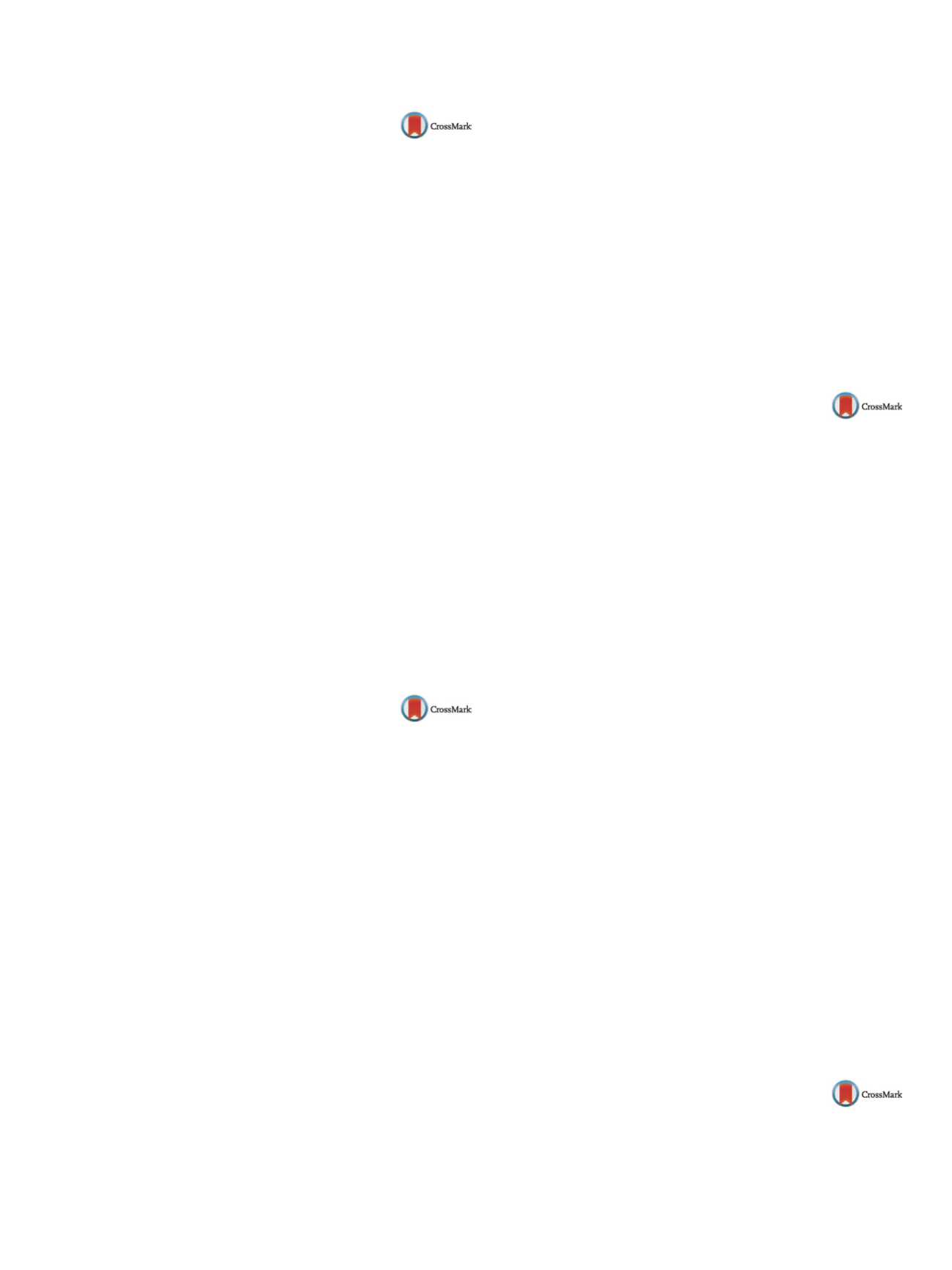

25th European Congress of Psychiatry / European Psychiatry 41S (2017) S847–S910
S861
EV1388
Efficacy of rational emotive therapy
among substance users
T. Dutta
Department of Psychology, Asutosh College, University of Calcutta,
Psychology, Kolkata, India
Introduction
Rational emotive behavior therapy refers to a real-
istic time bound therapeutic approach, starting with activated
concern model of emotional disturbance and change.
Objective
To set short-termgoal and long-termgoal for substance
users by rational emotive behavior therapy.
Aims
The present study aims at ameliorating emotional distur-
bance among addicts.
Methods
A purposive sampling method was adopted. Therapy
was administered on 50 substance users admitted in recovery
hospital running by pioneer organization Human Development
and Research Institute. Each day morning meeting was orga-
nized consisting of creed, narration from day by day; personal
and interpersonal pull up, acknowledgement, newspaper reading,
recreational activities, and serenity prayer. Quantitative and qual-
itative analysis was recorded.
Results
Inferential statistics have shown that statistically sig-
nificant differences were found among them those who have
undergone counselling processes. They have found a proper orien-
tation and significant qualities of life. Such therapy enabled them
to find sobriety.
Conclusion
In conclusion, it could be stated that Rational Emo-
tive Behaviour therapy was found to be effective among substance
users. We can utter with Walen et al. that rational emotive
behaviour therapy is ‘not merely working to dispel misery, but
actively promoting happiness’.
Disclosure of interest
The author has not supplied his/her decla-
ration of competing interest.
http://dx.doi.org/10.1016/j.eurpsy.2017.01.1718EV1389
Reasoning, critical thinking and
attitudes toward substance abuse in
adolescence: Explaining the mediator
role of emotional intelligence
H. Rezaei
1 ,∗
, A. Shafiabady
2, Y. Ghaedi
3, A. Delavar
1,
M. Esmaeili
1, L. Fattah Moghaddam
41
Allameh Tabatabaeei University Tehran, Counselling Department,
Tehran, Iran
2
Allameh Tabatabaeei University Tehran, Psychology and Education
Sciences, Tehran, Iran
3
Tehran Kharazmi University, Educational Philosophy Department,
Tehran, Iran
4
Tehran Medical Sciences Branch, Islamic Azad University,
Department of Psychiatric Nursing, Tehran, Iran
∗
Corresponding author.
Introduction
Adolescence is frequently described as a golden
time for prevention of substance abuse.
Aims
This study is aimed at determining the fit of structural equa-
tion modeling for change of attitude toward substance abuse based
on the components of emotional intelligence (intrapersonal aware-
ness, interpersonal awareness, adaptation, stressmanagement, and
general mood) and reasoning, critical thinking in female adoles-
cents.
Objectives and methods
The data were collected in random mul-
tistage sampling from800 senior high school students at 4 different
regions of Tehran by using the Bar-on Emotional Intelligence Inven-
tory, the adolescent-special revised inventory, Ricketts Critical
Thinking Questionnaire, New Jersey Test of Reasoning Skills and
Nazari’s Questionnaire for Attitude toward Substance Abuse. In the
618 valid questionnaires were statistically analyzed.
Results
Path analysis and path coefficients in the structural equa-
tion model suggested that the strongest relation belongs to the
reasoning skill, directly predicting attitude with a 61% level and
also, has indirect, significant impacts on attitude through intraper-
sonal awareness, adaptation and stress management. The weakest
relation belongs to general mood which, with a 21% level, predicts
attitude toward substance abuse. Results of the fit indices in the
final model also indicate that all indices are at a desirable level
and the model has good fit to the data, implying that there is a
linear relation between independent variables and between the
moderating variables and a dependent variable.
Conclusions
It is reasonable to show the importance of attitude
toward substance abuse in prevention programs for students.
Disclosure of interest
The authors have not supplied their decla-
ration of competing interest.
http://dx.doi.org/10.1016/j.eurpsy.2017.01.1719EV1390
Efficacy of vortioxetine for patients
with dual pathology
L. Fernández Mayo
∗
, E. Barbero García , D. Ba˜no Rodrigo ,
M. Agujetas Rodríguez , A. García Sanchez , V. De Antonio Pérez
CAID Majadahonda, Drug Addiction Attention Center, Majadahonda,
Madrid, Spain
∗
Corresponding author.
Introduction
Patients with dual pathology have worse clini-
cal evolution and worse therapeutic response. Drugs modify
the functioning of certain neurocerebral transmission systems,
producing cognitive, emotional and behavioral changes. Vortiox-
etine (Brintellix
®
) is used as a treatment for major depressive
disorder (MDD) and it is considered a new multimodal antide-
pressant. Preclinical data suggest that the effects on numerous
serotonin receptors result in regional increases in noradrenaline
and dopamine as well as glutamatergic transmission.
Objectives
This analysis assessed the efficacy of vortioxetine
(Brintellix
®
) in patients with affective disorders and abuse drugs
(dual pathology).
Methods
Efficacy was assessed with a study of patients who
were recruited in a qualitative and observational study. They
were treated with vortioxetine (Brintellix
®
). Outcome measures
included changes from baseline to endpoint in Hamilton Depre-
sion Rating Scale (HDRS). They were also interviewed weekly about
craving and substance use. Urine test controls were done to corrob-
orate results.
Results
A total of 11 vortioxetine-treated patients improved their
depressive and anxiety symptomatology. Seven of them (64%) were
males and four of them (36%) were women. Cocaine was the
main drug of abuse (
n
= 9, 82%). The doses were between 5 and
20mg/day. After the clinical evaluation and 12 weeks of treatment,
they achieved to reduce significantly the drug use and verbalized a
decrease in craving. Two patients dropped out of the study.
Conclusions
Vortioxetine (Brintellix
®
) was shown as efficacious
in reducing depressive and anxiety symptoms in patients with dual
pathology.
Disclosure of interest
The authors have not supplied their decla-
ration of competing interest.
http://dx.doi.org/10.1016/j.eurpsy.2017.01.1720EV1391
Alcoholic hallucinosis after chronic
alcohol abuse: A case report
J.J. Fernandez Miranda
1 ,∗
, D.F. Frías Ortiz
1, F.C. Maria Francina
2,
P. Rossi
2, O.W. Muquebil Ali Al Shaban Rodríguez
31
AGC SM-V-SESPA Asturian Mental Health Service, Psychiatry and
Mental Health, Gijón, Spain


















